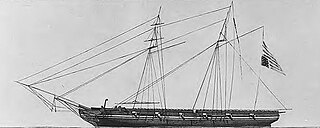Related Research Articles

Drammen is a city and municipality in Buskerud county, Norway. The port and river city of Drammen is centrally located in the south-eastern and most populated part of Norway. Drammen municipality also includes smaller towns and villages such as Konnerud, Svelvik, Mjøndalen and Skoger.

Grimstad is a municipality in Agder county, Norway. It belongs to the geographical region of Sørlandet. The administrative center of the municipality is the town of Grimstad. Some of the villages in Grimstad include Eide, Espenes, Fevik, Fjære, Håbbestad, Hesnes, Homborsund, Jortveit, Kroken, Landvik, Nygrenda, Prestegårdskogen, Reddal, Roresand, Rønnes, Skiftenes, Tjore, Vik, and Østerhus.

Christoffer Wilhelm Eckersberg was a Danish painter. He was born in Blåkrog in the Duchy of Schleswig. He went on to lay the foundation for the period of art known as the Golden Age of Danish Painting, and is referred to as the "Father of Danish painting".

Niels Nicolas Treschow was a Norwegian philosopher, educator and politician.

HMS Clio was a Cruizer-class brig-sloop of the Royal Navy, launched at James Betts' shipyard in Mistleythorn in Essex on 10 January 1807. Her establishment was 71 officers and men, 24 boys and 20 marines. She served in the Baltic during the Napoleonic Wars, accomplished the re-establishment of British rule on the Falkland Islands in 1833, and participated in the First Opium War. She was broken up in 1845.

HMS Belvidera was a Royal Navy 36-gun Apollo-class frigate built in Deptford in 1809. She saw action in the Napoleonic Wars and the War of 1812 and continued a busy career at sea into the middle of the 19th century. In 1846 she was reduced to harbour service, in 1860 she became a receiving ship, and she was finally disposed of in 1906.

Ulrich Fredrich von Cappelen (1770–1820) was a Norwegian businessman, ship owner and timber merchant.

Nicolai Benjamin Cappelen (1795–1866) was a Norwegian jurist and politician.
HDMS Brev Drageren was a Danish let brigger, launched in 1801 for the Royal Danish Navy. She was one of the many vessels the British captured from the Danish after the Battle of Copenhagen in 1807. She was subsequently added to the Royal Navy as HMS Brev Drageren, and was involved in two notable actions while in British service. She was sold in 1825.

Adrian Benjamin Bentzon was Governor of the Danish West Indies from 1816 to 1820.

HMS Persian was a Cruizer-class brig-sloop built by Daniel List and launched at Cowes in 1809. She captured two privateers before she wrecked in 1813.

John Bastard of Sharpham, Ashprington, Devon, was an officer of the Royal Navy who saw service during the French Revolutionary and Napoleonic Wars, and the War of 1812, rising to the rank of post-captain. He also entered politics and became a Member of Parliament.

The action of 2 March 1808 was a minor naval battle between the Royal Navy's 18-gun Cruizer-class brig-sloop HMS Sappho, and the 28-gun, Danish two-decker brig Admiral Yawl, during the Gunboat War. Sappho, under the command of Captain George Langford, discovered and chased Admiral Yawl, which was steering a course to intercept several merchant vessels to leeward. After a short engagement Sappho captured Admiral Yawl, commanded by Jørgen Jørgensen.

The West Indies Anti-Piracy Operations were a series of military operations and engagements undertaken by the United States Navy against pirates in and around the Antilles. Between 1814 and 1825, the American West Indies Squadron hunted pirates on both sea and land, primarily around Cuba and Puerto Rico. After the capture of Roberto Cofresi in 1825, acts of piracy became rare, and the operation was considered a success, although limited occurrences went on until slightly after the start of the 20th century.

John Loring was an officer in the Royal Navy who served during the American War of Independence and the French Revolutionary and Napoleonic Wars.

Bernhard Cathrinus Pauss was a Norwegian theologian, educator, author and humanitarian and missionary leader, who was a major figure in girls' education in Norway in his lifetime.

Jacob Fegth was a Norwegian timber merchant and ship-owner, and one of the largest timber merchants of Drammen in the early 19th century.
Alligator was launched in 1793 at London. She made one voyage for the British East India Company (EIC). She then became a general trader crossing the Atlantic. She was wrecked in 1820.
Jens Lind was a Danish sea captain, ship-owner, merchant, slave trader, landowner and industrialist. He was from the late 1780s until 1806 active in the Triangle Trade and was as such responsible for the shipment of somewhere between 1,800 and 2,000 slaves from Guinea to the Danish West Indies, approximately half of them illegally after the abolition of the slave trade in 1803. He was from around 1800 also involved in a substantial number of industrial enterprises, including a brewery at Vandkunsten 8 in Copenhagen and a paper mill, oil mill and soap factory on the Hulemose estate at Vordingborg.

Caspar Henrik Wolfsen was a Danish privateer and customs inspector of Bornholm.
References
- ↑ Odd Thorson, Drammen : en norsk østlandsbys utviklingshistorie, Vol. 2, p. 704, Drammen kommune, 1962
- ↑ Johan Nicolay Tønnessen, Kaperfart og skipsfart 1807–1814, Cappelen, 1955
- ↑ Den Norske Rigstidende, 13 August 1821
- ↑ Notes by Alfthan Vogt Brocklesby Juel, 1912, Drammen Museum